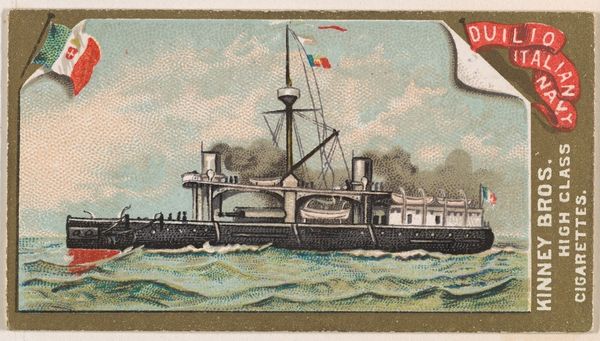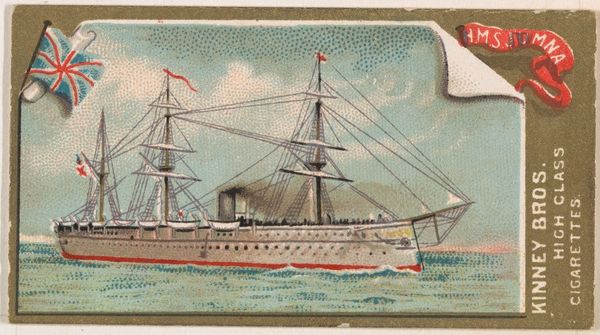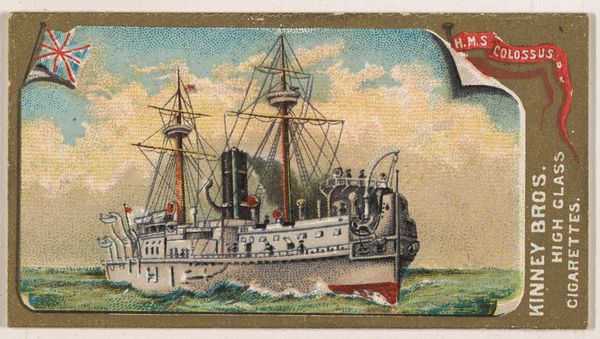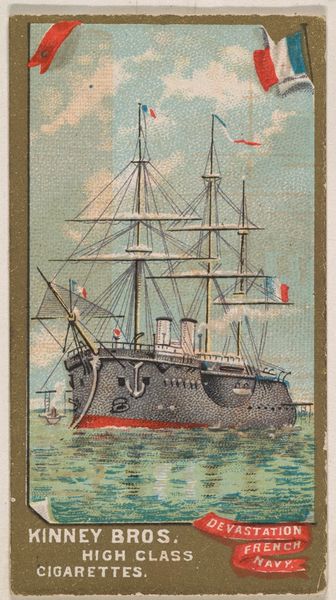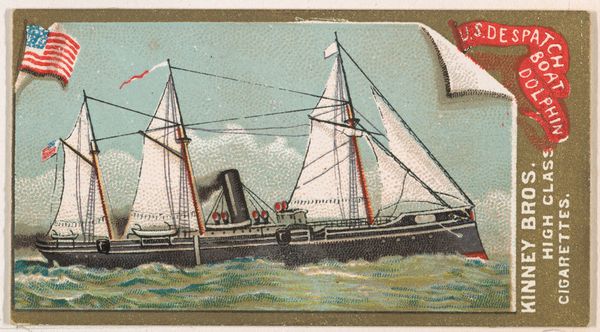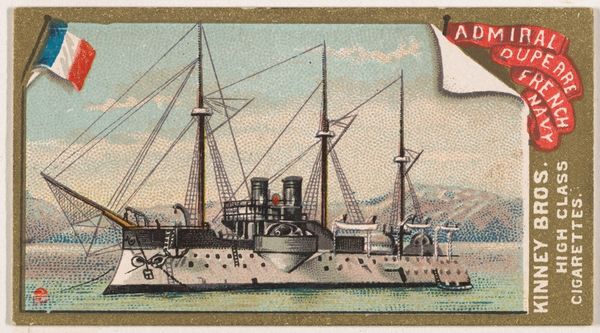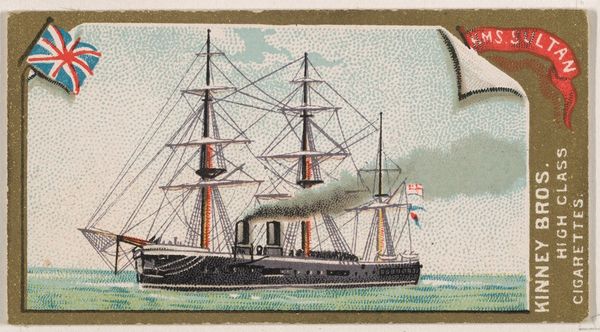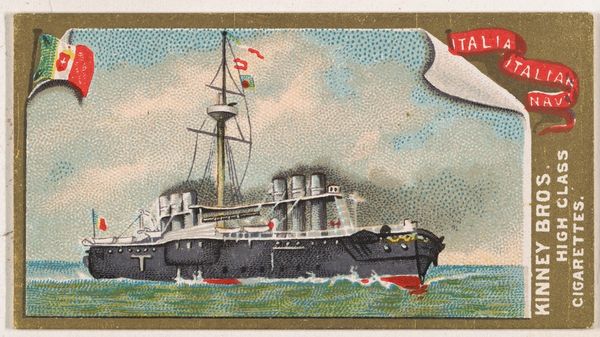
U.S.S. Texas, from the Naval Vessels of the World series (N226) issued by Kinney Bros. 1889
0:00
0:00
drawing, print, watercolor
#
drawing
#
still-life-photography
#
ship
# print
#
landscape
#
oil painting
#
watercolor
#
watercolour illustration
#
watercolor
Dimensions: Sheet: 1 1/2 × 2 3/4 in. (3.8 × 7 cm)
Copyright: Public Domain
Curator: This piece, "U.S.S. Texas, from the Naval Vessels of the World series" dates back to 1889. It’s a print, drawing, and watercolor, issued by Kinney Bros. Editor: It has such a… quaint, almost nostalgic feel. The rendering of the ship on what appears to be choppy water and a small American flag is so charmingly executed. The image itself is a fascinating composite object, since it serves as both art and advertisement. Curator: Absolutely. These were, in essence, trade cards, included in Kinney Brothers' cigarette packs. Their mass production positioned them within a burgeoning culture of collecting, particularly around representations of industrial progress and military might. The print, through its cheap materials and association with tobacco consumption, challenges our standard art boundaries. Editor: That tension is palpable. It also functioned as a propaganda tool. The image, while decorative, also promoted a specific image of American naval power. This little card tells a grander story of how companies aided in nation-building and defining U.S. identity. What do you make of it using watercolor, traditionally associated with fine art? Curator: I believe that using watercolor in mass-produced commercial objects brings art closer to everyday life and acknowledges the aesthetic labor of skilled illustrators who produced designs on behalf of businesses. Watercolor as medium is well-suited for the demands of reproducing multiples because it is relatively easy to reproduce! The drawing, the print… they’re all essential for dissemination. Editor: A clever strategy by Kinney Bros. It made this image ubiquitous. Thinking about its role in society reveals how cultural values, and commercial strategies shape our understanding of national strength. The “U.S.S. Texas” transformed from simply a ship into an icon during the late 19th century. Curator: That makes me think about who gets to decide the difference between a collectible and a legitimate piece of art, and that’s dependent upon market value and where and how it is being consumed. Editor: It really is a great microcosm of that very argument. Well, I certainly won’t look at old cigarette cards the same way again. Curator: Nor I. I’m struck once more by the complex economic system by which artistic work reaches the masses.
Comments
No comments
Be the first to comment and join the conversation on the ultimate creative platform.
